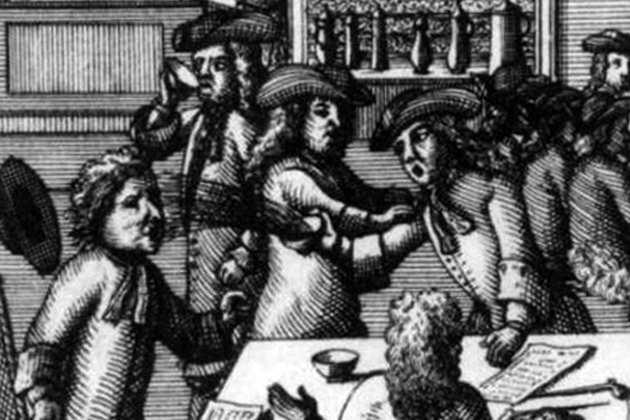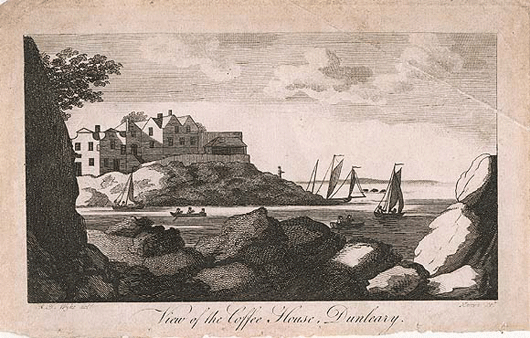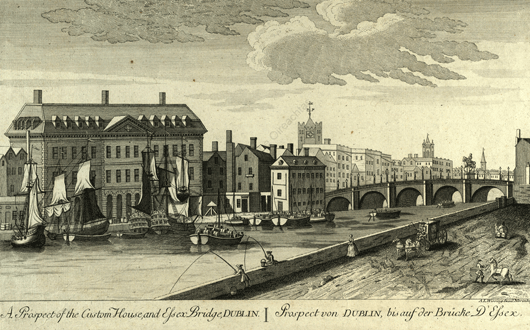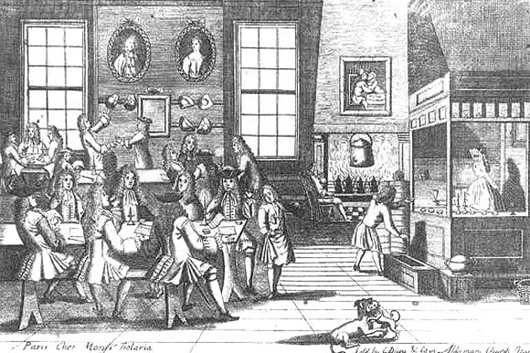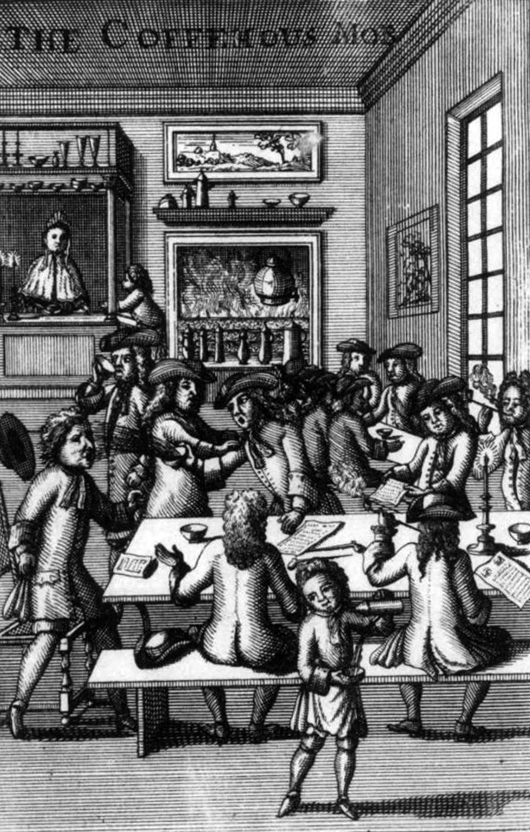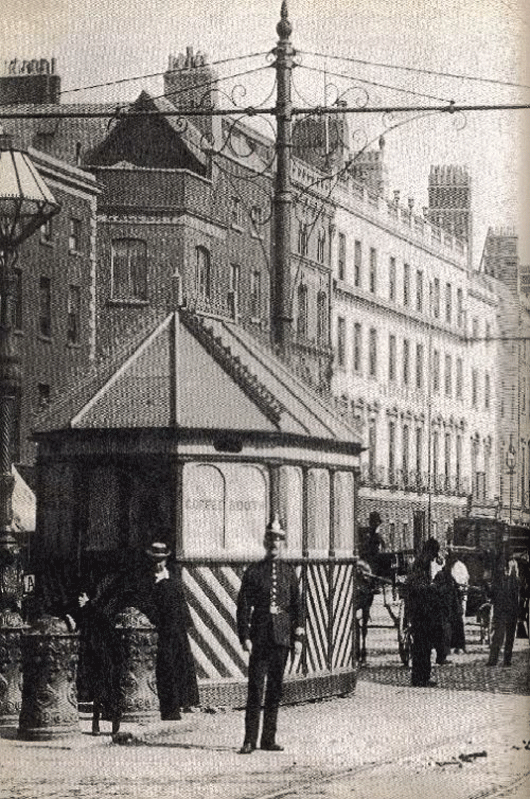While conducting her own research into the history of Parliament Street, Colette Adanan, who works here in City Architects, happened upon some interesting facts about the colourful history of Dublin’s first coffee houses.
These first appeared in the city in the late 17th century. Coffee was originally imported into Europe by Venetian traders, starting in 1615. In the decades that followed the coffee house spread across Europe as a popular ‘third place’ in urban areas. By the middle of the century they had reached Britain where they served as an alternative to the boozier taverns of the time. Soon after their introduction in Dublin, many houses were opened throughout Ireland. A report from 1698 lists coffee houses in Cork, Limerick, Kilkenny, Clonmel, Wexford, and Galway. This trend continued into the following century with Coffee Houses appearing soon after in Belfast and Waterford.
Coffee House in ‘Dunleary’, 1803, Image Courtesy of the National Library of Ireland
The city’s coffee houses quickly gained a large and varied clientele, particularly among the merchant class. They quickly became the place to meet, negotiate, and find out the latest developments. Consequently many of the first coffee houses were concentrated in the area surrounding the original custom house on Essex Quay. This thriving district included premises on Essex Street, and Crampton Court, as well as houses in the Royal Exchange (now City Hall) and the Custom house itself.
An Engraving of the Original Custom House on Essex Quay – source with description
Depending on the particular establishment, the coffee houses attracted a wide clientele with all but the lowest rung of society catered for. However, despite several women owning coffee houses, it was not deemed respectable for them to patronise such premises. The layout was basic, generally consisting of a group of long wooden tables and benches around which the clientele were gathered. This account gives a flavour of some of the Houses.
“There were Lucas’s Coffee House, on Cork Hill (the scene of many duels), frequented by fashionable young men; the Phoenix, in Werburgh Street, where political dinners were held; Dick’s Coffee House, in Skinner’s Row, much patronized by literary men, for it was over a bookseller’s; the Eagle, in Eustace Street, where meetings of the Volunteers were held; the Old Sot’s Hole, near Essex Bridge, famous for its beefsteaks and ale; the Eagle Tavern, on Cork Hill, which was demolished at the same time as Lucas’s to make room for the Royal Exchange; and many others.”
Maxwell, Constantia, Dublin under the Georges 1714–1830
Quoted in Coffee Culture in Dublin – A Brief History Martin Man Con Iomaire
17th Century Coffee House Interior
During their heyday, the coffee houses became hotbeds of heated discussion, debate, meetings, and gossip. A large part of their appeal owed to the multitude of newspapers available to read. The selection on offer was a source of great pride to the owners with many boasting titles from both home and abroad. In addition, other documents were presented such as parliamentary reports and notices from bodies such as the Wide Street Commissioners. Despite this, the discussion in the houses was often seditious or revolutionary, particularly surrounding the residual Jacobin interest.
The Coffee House Mob, 1710
It is not totally surprising then, that many of the city’s booksellers and printers were associated with the coffee houses. One such figure was Richard Pue. From his base in Carbery House, Skinners Row (present day Christchurch Place), he ran Dick’s Coffee House, one of the best known in the city. His interests extended into printing and auctioneering. Among the titles published at Carbery House were the Dublin Intelligence and his own Pue’s Occurrences. The owner of the Dublin Intelligence boasted at the time
‘At the Printing-House at the Back of Dick’s coffee-house, and at the Post Office coffee-house, will be continually printed the best and freshest News both Foreign and Domestick; and all considerable Occurrences that happen in any Harbour, Port, or Place in this Kingdom; which may certainly be depended upon as truth, they having settled a Correspondence at the Post-Office.’
The popularity of the coffee houses continued throughout the 18th century. However by the turn of the following century their appeal had diminished. Dick’s Coffee House was closed in 1780 and Carberry House demolished. Other, once popular, establishments suffered a similar fate. With the increased availability of newspapers in the mid 19th century, the influence of the coffee houses had faded as the city’s dominant ‘third space’.
Coffee continued to be imported into Dublin however by traders such as the Bewley family. Starting in 1835, they originally imported tea before moving into the coffee trade. By the end of the nineteenth century, they had opened their own cafes on South Great Georges Street (1894) Westmorland Street (1896). Their most famous premises opened on Grafton Street in 1927. As hubs of the city’s social, literary, and artistic life they have their own unique story; One different from the coffee house’s hectic origins.
The always enlightening Come Here To Me! blog posted this image of a late 19th/Early 20th century coffee booth on O’Connell Street followed by an interesting discussion on the drink in the city.
For further reading check out
Maire Kennedy (Dublin City Public Libraries) – Dublin Coffee Houses
Martin Man Con Iomaire – Coffee Culture in Dublin – A Brief History
Or see this Telegraph article for an account of London’s Experience

